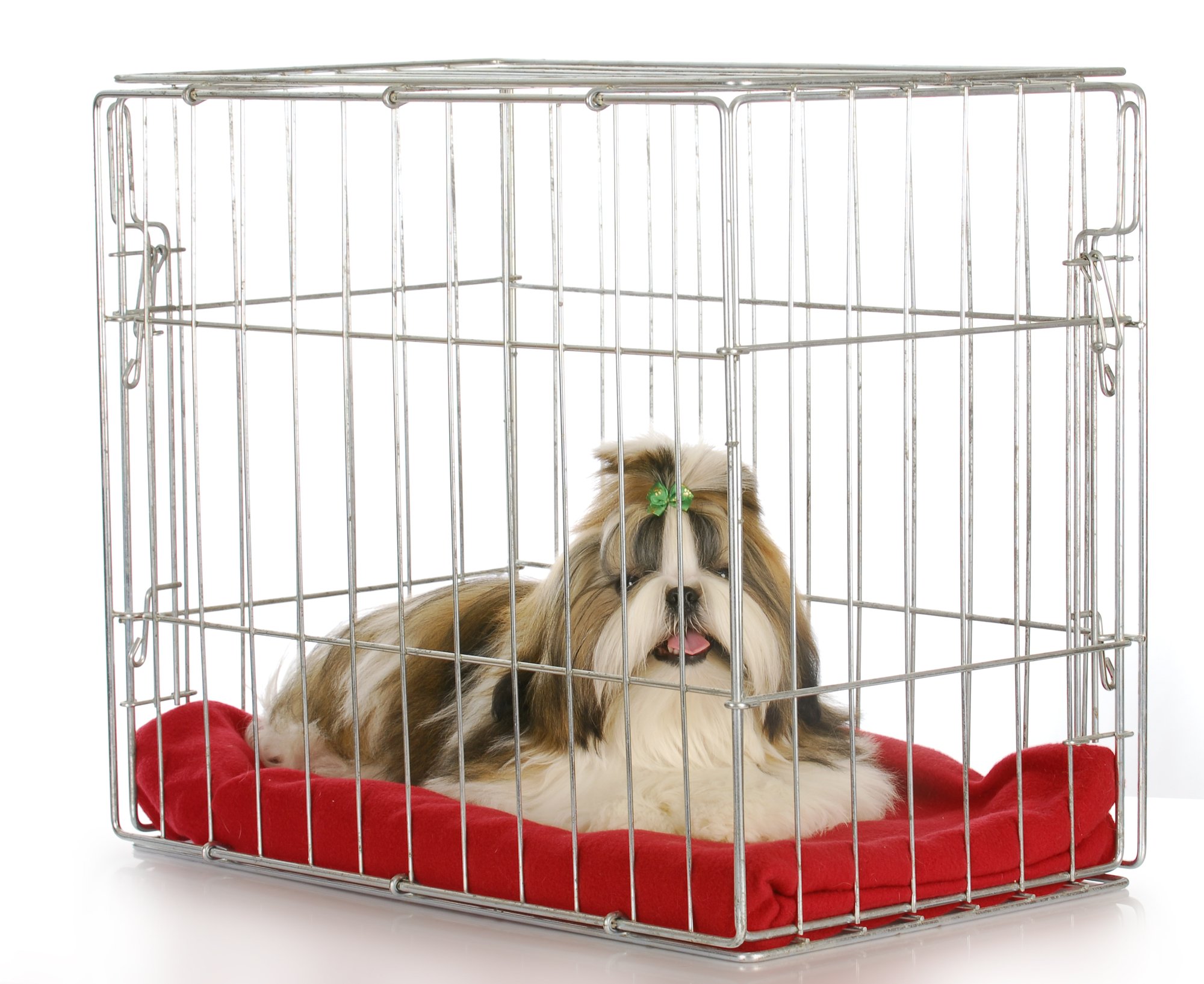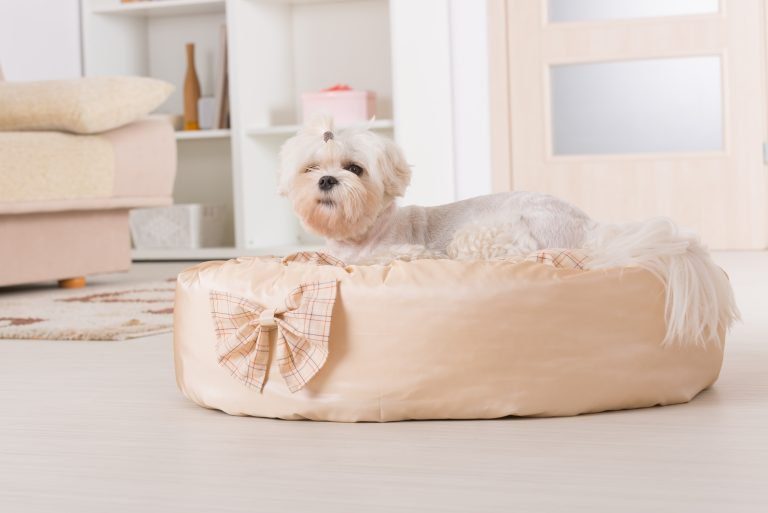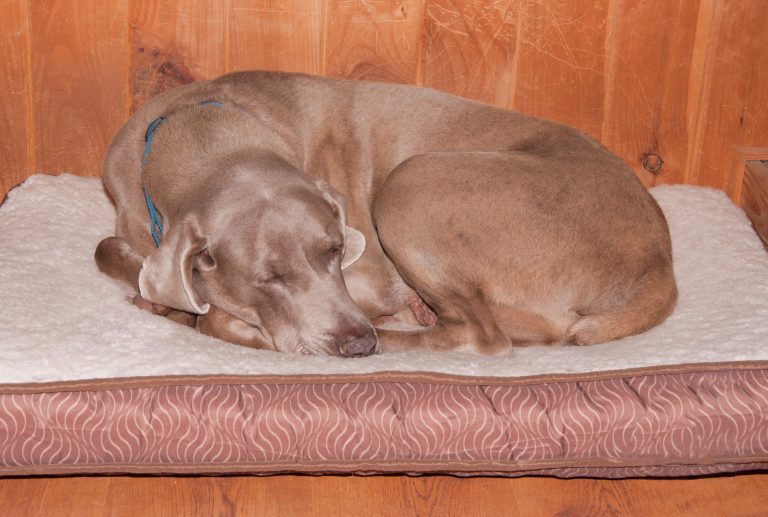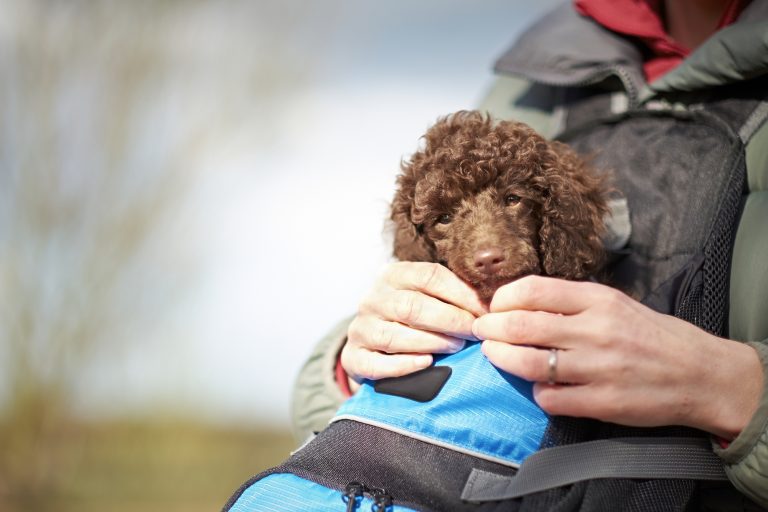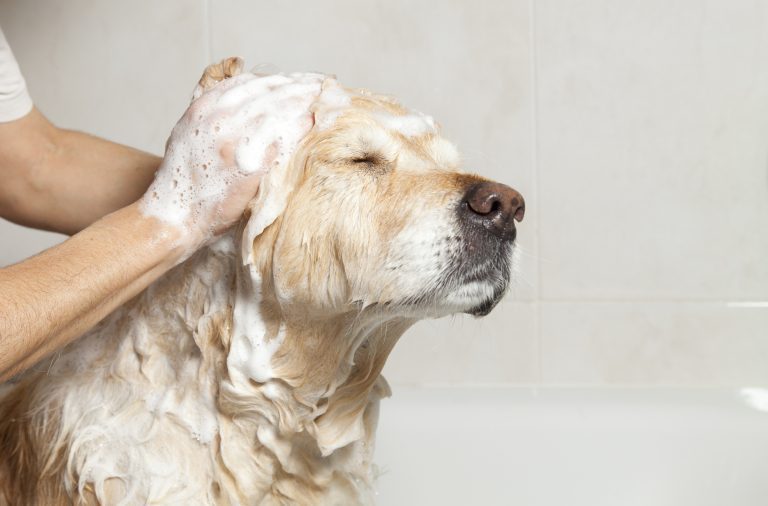What Size Dog Crate Should I Get for My Dog?
The primary purpose of a dog crate in this context is to provide confinement for safety reasons. It can also be helpful in cases when you’re just beginning puppy training. It does not matter whether the goal is preventing destructive behavior or trying to ease certain issues around separation anxiety.
Dog crates are plastic, wooden or metal-enclosed pens or cages big enough to allow your dog to stand and sleep in comfortably while also keeping them safe and secure. The use? Usually, a dog crate is a way to enclose your dog while you’re out at work or sleeping to prevent them from roaming freely around the house.
Using a crate to train your dog can be beneficial for both you and your precious pup. From establishing a daily routine to preventing housetraining accidents and more, there are numerous reasons to use a dog crate.
However, before you take action to make a dog crate or buy one, you should first be asking what size dog crate should I get for my dog.
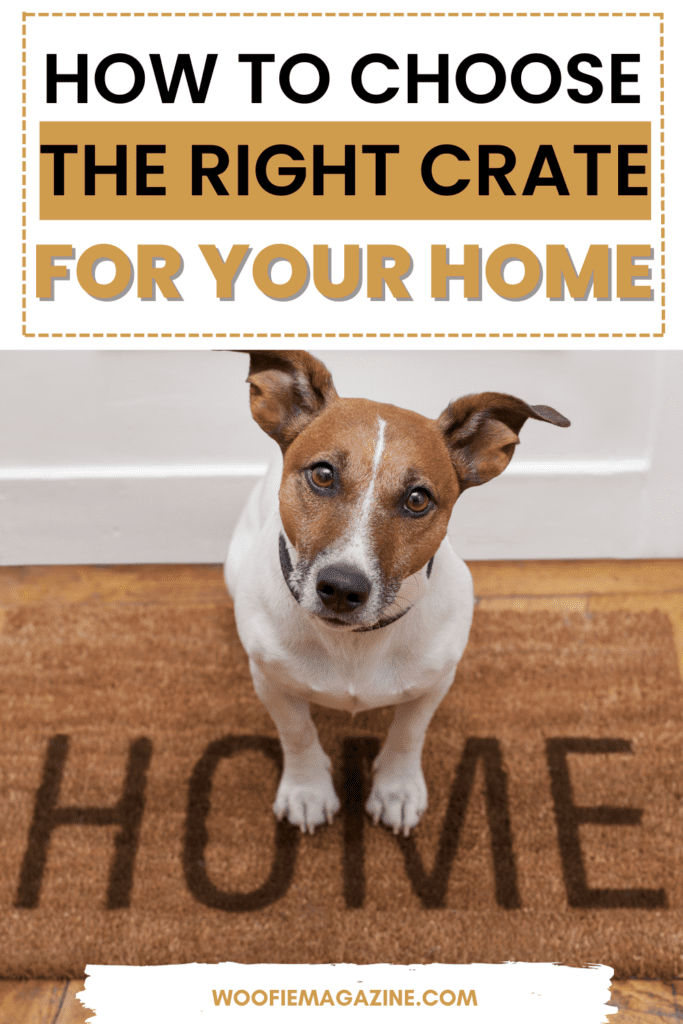

Why Should You Use a Dog Crate?
First, let’s take a step back and analyze the various benefits and uses for a dog crate.
If you’re the parent of a puppy, it’s essential to consider whether or not you’ll let your puppy roam around the house freely. In 99% of cases, it’s best to crate your puppy while you’re not home, simply for their safety.
In addition, when they’re very young and still adjusting to your home, it’s best to confine them to their crate or a smaller room in the house. This will prevent overwhelming them with new sights, sounds, and distractions.
To your benefit, crating your dog while you’re not home will also give you peace of mind as you’ll be able to rest assured that nothing will be destroyed. It’s also a great way to avoid having them develop any negative behavioural traits or habits. Not crating them while they’re home alone can mean they’ll have time to learn bad habits such as chewing on furniture or playing with dangerous electrical cords.
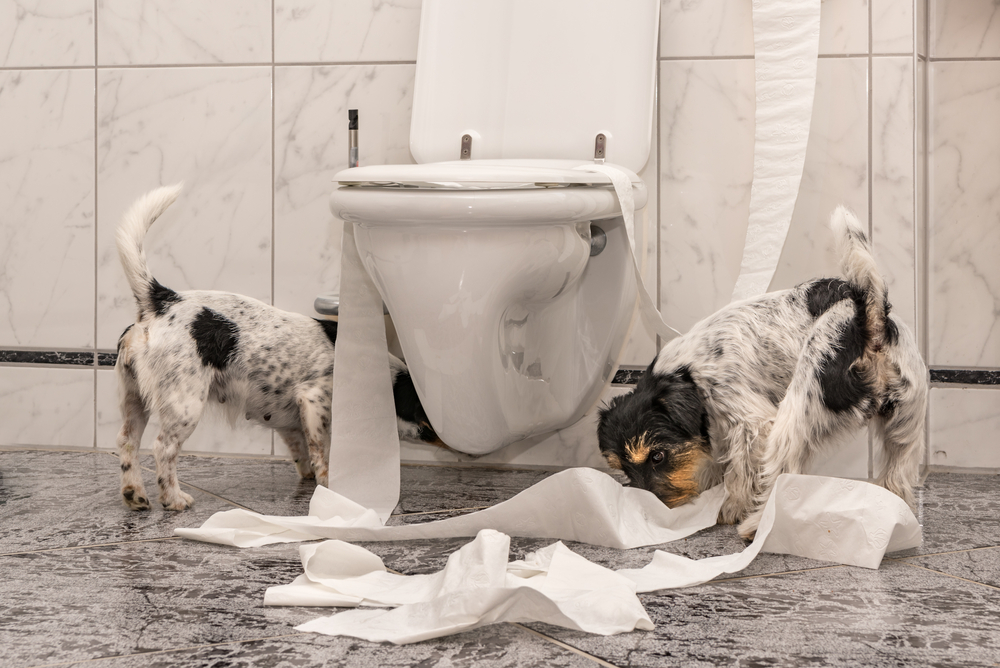

How Do You Choose the Right Crate for Your Dog?
If you head to the pet store, you’ll find a variety of different crates, and the choices might feel a bit overwhelming. Most are plastic or collapsible, metal pens. These come in different sizes, and the size you need will mostly depend on your dog’s breed.
If you choose the wrong size, you risk having your dog feel either very constricted or a bit too free. If it’s too big, that freedom can encourage them to run around and play instead of settling down to rest. The goal is to choose the right size of crate for your dog so that they feel safe, secure, and comfortable without feeling “caged in.”
As a general rule of thumb, they should be able to sit down, stand up, and lie down without any trouble. You’ll also need to consider the type of material of the crate and whether it’s for indoor or outdoor use.
If you prefer to get something that is portable so that you can bring it around, you can consider either the fabric or metal types of crates. For puppies, having the soft fabric crate may be more suitable. These crates are softer and more comfortable for your little pups.
If you have a bigger dog, then you might want to get the metal or plastic crate since these are sturdier. For someone who prefers to have the dog crate blend in with the rest of the house, you may want to consider a wooden dog crate instead. Such crates come in different sizes not only to suit the size of your dog, but also to cater to the space constraint you may face in terms of the designs of your apartment.
Measuring Your Dog’s Size
The first thing to consider when choosing the size of a crate is to pay attention to your dog’s size. As mentioned, your dog should be able to turn around easily and sit up without hitting its head on the top of the crate if it’s a plastic or wooden enclosed crate. If it’s a collapsible metal pen, ensure that it’s wide enough so that your dog can lay down comfortably.
To measure your dog, you need to measure both its length and height. You can do this by using a measuring tape and measuring their body’s length from head to bottom and head to paws. You can also place them up against the wall and measure them with a piece of chalk like you might measure a child. Don’t worry about measuring their width as their height and length will be enough of an indicator of the size of the crate you need.
It’s important to note that you don’t need to include the dog’s tail when measuring their size because dogs can curl their tail around them, so the size of their tail doesn’t matter. In fact, if you factor this into their size, it might lead you to purchase a crate that’s just a bit too big.
Now that you have their measurements, add two to four inches to the total (both height and length). If it’s a small dog, add two inches and if it’s a bigger dog, add four. This will give you the minimum measurements needed for the kennel while at the same time, providing them with just a bit of wiggle room for comfort.
To provide a bit of reference, here are the common sizes for dog crates according to various popular breeds. Do take note to measure your dog for more accuracy:
● Yorkshire Terriers: 24″x18″ or 24″x24″
● French Bulldogs & Cocker Spaniels: 24″x30″ or 24″x36″
● Beagles: 30″x30″ or 30″x36″
● German Shepherds & Huskies: 48″x36″
● Great Danes & Mastiffs: 60″x36″ or 72″x36″
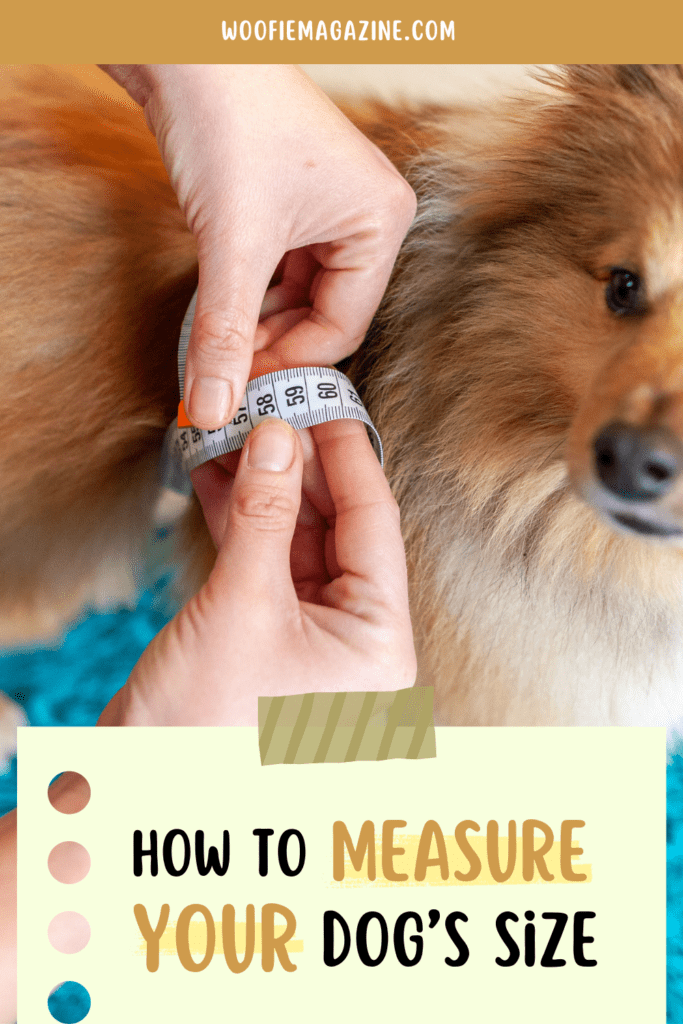

What About Growing Dogs?
We’ve established that you need to measure your dog’s height and length to determine the right dog crate size (and remember, add two to four inches to that total), but what do you do if you have a growing dog? How do you measure them for a crate?
One suggestion is to buy a smaller crate for your puppy when it’s still young and get a bigger crate when your pup has grown up. Besides having to spend extra money, you’ll also have to spend additional time letting your pup get used to the new crate again.
Some dogs have no problem changing to a new crate when they have outgrown the first one but there are dogs which will not like the change. These dogs might face anxiety issues when they have to switch to another crate.
If you want to avoid having to purchase more than one crate, you can research your dog’s breed and estimate roughly how big they’ll grow to be. With that in mind, you can follow the steps above to purchase the right size crate for them and then buy a divider to reduce the size to suit your dog while it’s still in its puppy stage.
A divider is a type of removable wire or wooden panel that you’re able to insert into the crate to sort of block off an area of the space. By using a divider, you’ll get the benefits of a well-fitted kennel for your dog’s puppyhood and adulthood while still taking advantage of its puppy stage to crate train it properly.
If you fail to use the divider, you risk having your puppy use a portion of the crate for sleeping and another portion for playtime and perhaps even as a potty area. Avoid tempting them in this way and make use of the divider instead! When they get bigger, all you have to do is take it out!
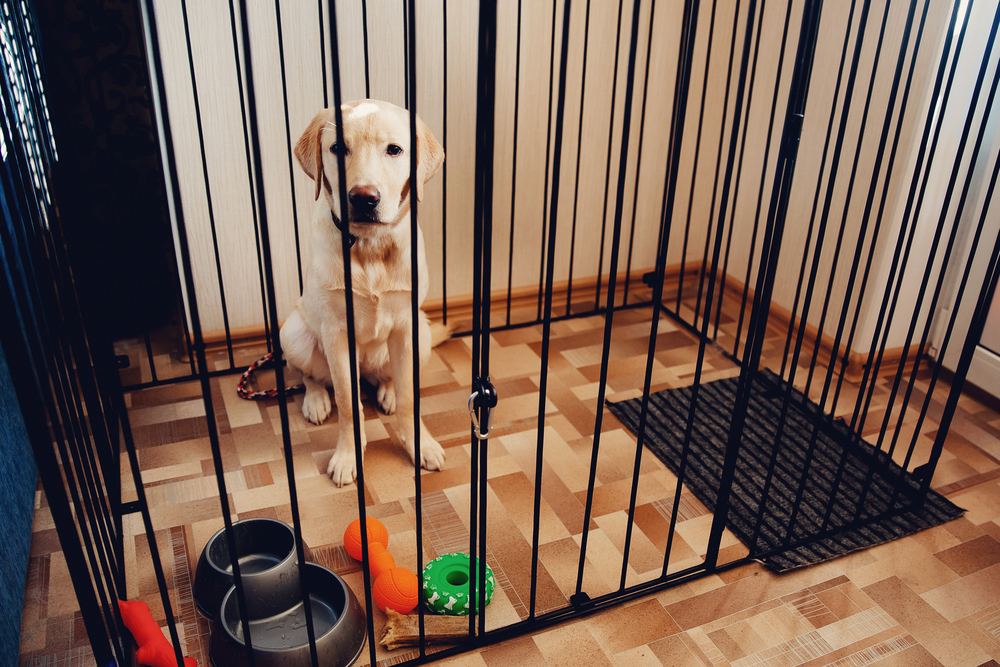

How to Choose the Right Crate for Your Home
Let’s say you have the measurements you need to select the right crate for your dog. Now, it’s important to factor in where you’ll place the crate in your home.
If you’re going to crate your dog at night and leave them out on your back patio, for example, the size might need to be a bit smaller to keep your dog warm at night and to fit into a particular space. You may also need to get a crate cover to prevent it from getting wet or to keep out the cold air at night.
When crate training your dog, it’s recommended to place the crate in an area of your house where you and your family spend the most time. If this is the living room or even your bedroom, be sure that the crate will fit into the space and maybe even the design of your apartment. In that case, you may want to consider getting this dog crate from Casual Home as it looks just like a part of your wooden furniture. If not, you might try to look for a collapsible metal crate that can be adjusted to fit the room’s unique angles and areas.
Final Thoughts
Before you make your purchase, make sure that you consider the above factors carefully first. You want your furry friend to be comfortable in the crate and also not to regret your choice. This should be a tool that helps train your pet and not something that ends up giving you more stress.



